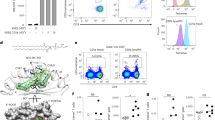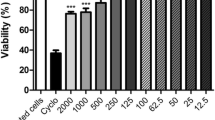Abstract
Various cell stimuli act through activation of phospholipase A2 resulting in the release of arachidonic acid, the precursor of eicosanoids, from the sn-2 position of cell membrane phospholipids. A byproduct of phospholipase A2 activity is the lysophospholipids which have been found to potentiate T-lymphocyte activation. The purpose of the present study was to determine whether the various lysophospholipids modulate the migration of peripheral normal human T lymphocytes in vitro. It was found that lysophosphatidylcholine (lysoPC) induced T-lymphocyte migration in the concentration range 10−7 to 10−4 M with a maximum at 10−6 M (mean chemotactic index, 2.06). The migration was due to chemotaxis rather than chemokinesis. In contrast, lysophosphatidylethanolamine (lysoPE) and lysophosphatidylinositol (lysoPI) did not exhibit chemotactic properties towards T lymphocytes. Further studies showed that the length of the fatty acids in the sn-1 position as well as the presence of double bonds modulated the chemotactic ability. The lysoPC compound with the highest chemotactic activity was lysoPC;1-palmitoyl (C=16∶0). The results demonstrated that lysoPC, a phospholipase A2-generated hydrolysis product of phosphatidylcholine, induced T-lymphocyte chemotaxis in vitro. Because phosphatidylcholine is the major phospholipid in the epidermis, the activation of phospholipase A2 may result in the release of lysoPC in concentrations capable of inducing migration of T lymphocytes into the epidermis.
Similar content being viewed by others
References
Asaoka Y, Oka M, Yoshida K, Nishizuka Y (1991) Lysophosphatidylcholine as a possible second messenger synergistic to diacylglycerol and calcium ion for T-lymphocyte activation. Biochem Biophys Res Commun 178: 1378–1385
Asaoka Y, Oka M, Yoshida K, Sasaki Y, Nishiuka Y (1992) Role of lysophosphatidylcholine in T-lymphocyte activation: Involvement of phospholipase A2 in signal transduction through protein kinase C. Proc Natl Acad Sci USA 89: 6447–6451
Christophers E (1989) Regulative Faktoren der psoriatischen Hautreaktion. Hautarzt 40: 456–460
Cooper KD (1990) Psoriasis. Leukocytes and cytokines. Dermatol Clin 8: 737–745
Fogh K, Herlin T, Kragballe K (1989) Eicosanoids in skin of patients with atopic dermatitits: prostaglandin E2 and leukotriene B4 are present in biologically active concentrations. J Allergy Clin Immunol 83: 450–455
Forster S, Ilderton E, Norris JFB, Summerly R, Yardley HJ (1985) Characterization and activity of phospholipase A2 in normal human epidermis and lesion-free epidermis of patients with psoriasis or eczema. Br J Dermatol 112: 135–147
GrØn B, Iversen L, Ziboh V, Kragballe K (1993) Monohydroxy fatty acids esterified to phospholipids are decreased in lesional psoriatic skin. Arch Dermatol Res 285: 1–6
Jinquan T, Larsen CG, Gesser B, Matsushuisa K, Thestrup-Pedersen K (1993) Human IL-10 is a chemoattractant for CD8+ T lymphocytes and an inhibitor of IL-8-induced CD4+ T lymphocyte migration. J Immunol 151: 4545–4551
Kragballe K, Ellegaard J (1978) ATP-ase activity of purified human normal T- and B-lymphocytes. Scand J Haematol 20: 271–279
Kume N, Cybulsky I, Gimbrone MA Jr (1992) Lysophosphatidylcholine, a component of atherogenic lipoproteins, induces mononuclear leukocyte adhesion molecules in cultured human and rabbit arterial endothelial cells. J Clin Invest 90: 1138–1144
Marquardt DL, Walker LL (1991) Lysophosphatidylcholine induces mast cell secretion and protein kinase C activation. J Allergy Clin Immunol 89: 721–730
Mossman T (1983) Rapid colorimetric assay for cellular growth and survival: application of proliferation and cytotoxity assays. J Immunol Methods 65: 55–63
Quinn MT, Parthasarathy S, Steinberg D (1988) Lysophosphatidylcholine: a chemotactic factor to human monocytes and its potential role in atherogenesis. Proc Natl Sci USA 85: 2805–2809
Quinn MT, Kondratenko N, Parthasarathy S (1991) Analysis of the monocyte chemotactic response to lysophosphatidylcholine: role of lysophospholipase C. Biochem Biophys Acta 1082: 293–302
Valdimarsson H, Baker BS, Jonsdottir I, Fry L (1986) Psoriasis: a disease of abnormal keratinocyte proliferation. Immunol Today 7: 256–259
Author information
Authors and Affiliations
Rights and permissions
About this article
Cite this article
Ryborg, A.K., Deleuran, B., Thestrup-Pedersen, K. et al. Lysophosphatidylcholine: a chemoattractant to human T lymphocytes. Arch Dermatol Res 286, 462–465 (1994). https://doi.org/10.1007/BF00371572
Received:
Issue Date:
DOI: https://doi.org/10.1007/BF00371572




